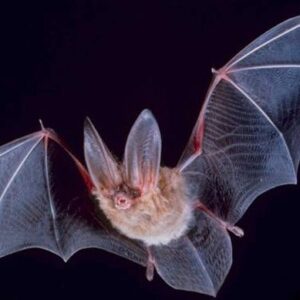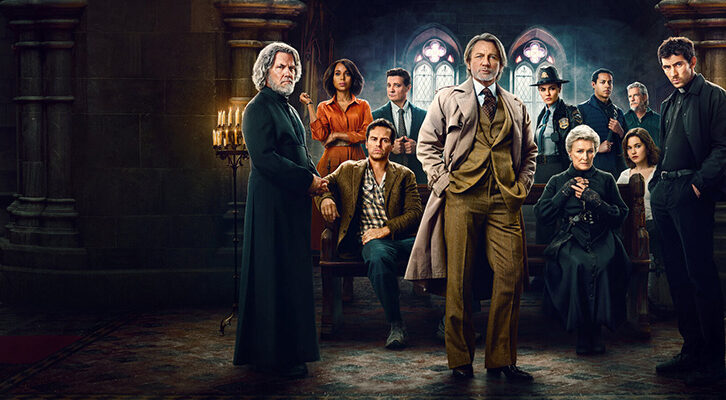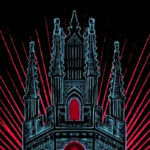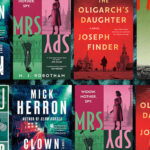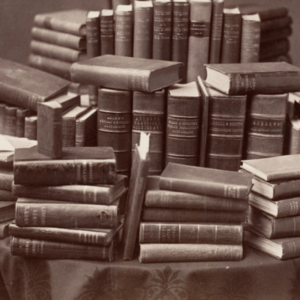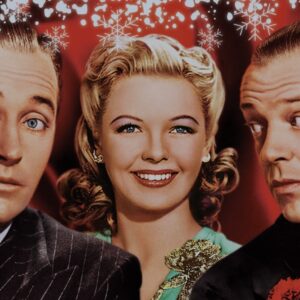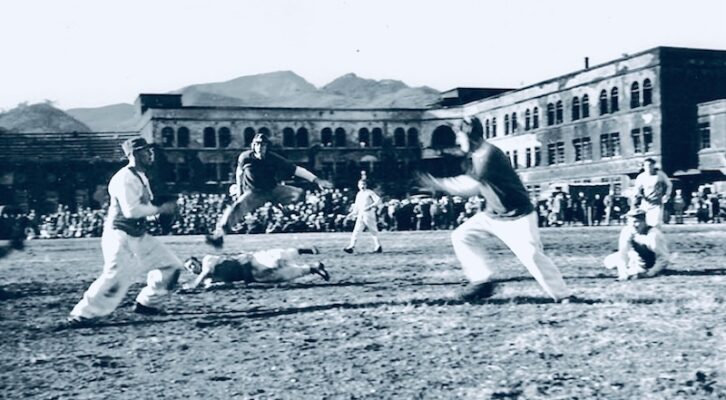
The Poet Who Watched a Football Game on Nagasaki’s Atomic Killing Field
Greg Mitchell on William W. Watt’s Experience in the Aftermath of Nuclear Devastation
Feature photo courtesy of the National Archives.
“Nagasaki was an embarrassment to the art of war.”
–Don DeLillo, End Zone
*
One of the most disturbing sporting events in history took place on January 1, 1946, when the US military staged an all-star football game on a field in Nagasaki, Japan—less than five months after an atomic bomb killed over 70,000 in that city, nearly all of them civilians. The game, dubbed “The Atomic Bowl,” was played on the same day that college football bowl games were being played in the US.
Today, nearly 80 years to the day after the bombings, the first vivid letters about the game and its aftermath, along with several previously unpublished images, have emerged from an unexpected source: William W. Watt, a revered English literature professor and poet whose work was for many years published in The New Yorker among other magazines.
Nagasaki has long been known as “The Forgotten Bomb,” and few well-known writers have written about the targeting of a second Japanese city just three days after the first attack on Hiroshima on August 6, 1945. John Hersey’s classic New Yorker article and bestselling book, Hiroshima have stood unrivaled; Hersey never wrote about Nagasaki but privately referred to the second bombing as “indefensible,” calling it “a totally criminal action.”
They would have to play touch, not tackle, football because shards from the atomic blast still littered the field.
Kurt Vonnegut, Jr., who had survived the firebombing of Dresden as a POW during World War II—upon which he based his breakthrough novel, Slaughterhouse Five—was later quoted as saying, “The most racist, nastiest act by this country, after human slavery, was the bombing of Nagasaki. Not of Hiroshima, which might have had some military significance. But Nagasaki was purely blowing away yellow men, women, and children. I’m glad I’m not a scientist because I’d feel so guilty now.”
A contemporary of Vonnegut, William W. Watt held advanced degrees from Harvard and Yale, and was teaching literature at Lafayette College in Easton, PA when he joined the Navy as an officer in 1944. In September 1945, thousands of US Army troops and Marines landed near the picturesque port city of Nagasaki in southern Japan to occupy the area shortly after the enemy’s surrender ended World War II.
They witnessed a city, and countless survivors, still devastated by the US atomic bomb dropped over Nagasaki on August 9th. Lieutenant Watt, now a communications director of the Port of Nagasaki, described his response to the ruins of Nagasaki in letters to his wife back in Easton: “It looks like a brickyard in which some giant Vandal has gone about smashing the bricks for the Hell of it….I feel sorry for the women, and the little kids break my heart, some of them with burned faces…Horror had clouded my conscience since I first visited the Atomic Area.”
Top US military officers, however, often requested personal tours of the ruins. One day, a visiting admiral ordered him to steal a sacred relic from a temple. So Watt had a vest made that he would wear in protest, with needlework showing rubble and in large letters “Atomic Bomb Tours, Incorporated.”
Already, when journalists or US officials referred to the atomic attacks on Japan, it was likely that one word, Hiroshima, would be used as shorthand for the two separate catastrophes, with Nagasaki relegated to an afterthought. This meant that Nagasaki was often ignored, an afterthought.
During the past year, US troops had competed in sports in both the Pacific and in Europe. Top brass encouraged this as a way for bored servicemen to—as one put it—“blow off steam,” and to show locals the glory of American sports. So it was no surprise that a Marine commander ordered that a game be held in Japan to coincide with the Christmas and New Year’s holidays, when homesick soldiers would most benefit from it.
Selected as captains of the two squads: Notre Dame’s Heisman-winning quarterback Angelo Bertelli and Chicago Bears star running back “Bullet Bill” Osmanski. A gridiron was cleared near ground zero in front of a middle school which had lost 162 students and 13 teachers to the atomic bomb. A top officer wrote a press release promising that the game, which he dubbed “the first annual Atom Bowl classic,” would have “all the color—and more” of the bowl games to be played that day back in the States, including a Marine band and Japanese girl cheerleaders.
But they would have to play touch, not tackle, football because shards from the atomic blast still littered the field.
In his office over at the harbor, Watt learned about the game around noon and rushed to the site in a jeep on this chilly New Year’s Day. He would describe the game in a letter to his wife later that day: “I was one of the 1500 enthusiastic customers at the Atom Bowl Game. In the long history of football classics, there has been nothing to quite compare with it….
“There were only two wooden bleachers, so we followed the play up and down the sidelines. Here and there were isolated Japanese—a father and his boy, a group of giggly girls, two old men—all looking small and lost and bewildered by it all. Off in the distance on the fringes of the hills were little groups of Japanese regarding the strange Western spectacle in quiet isolation.
“There was no organized cheering. I guess it was because, in spite of everything, it didn’t feel like home—and because everyone was wondering what the Hell he was doing there watching a touch football game in this bizarre Inferno….and secretly hoping the first Atom Bowl Game would also be the last.
Watt enclosed with the letter—for his children—haunting reminders of what had happened at that site back in August: the name tags of two former students at the middle school.
“P.S. The Tigers won 14-13 on a run by Bill Osmanski in the last two minutes of play. The Bears scored on two passes by Angelo Bertelli.”
Watt enclosed with the letter—for his children—haunting reminders of what had happened at that site back in August: the name tags of two former students at the middle school. (Excerpts from the Watt letters, along with photographs given to him, are now published for the first time in my new book, The Atomic Bowl.)
The game would be covered widely by US newspapers and wire services, but with no followup features or interviews.
Watt was still required to give tours of the ruins. He reported to his wife: “The area was haunted for me by silence and horror. It was a desert of destruction. For the body counters, of course, it took second place to Hiroshima. The second atomic bomb was not the first. And 70,000 incinerated human beings, and many still dying, did not break the record.”
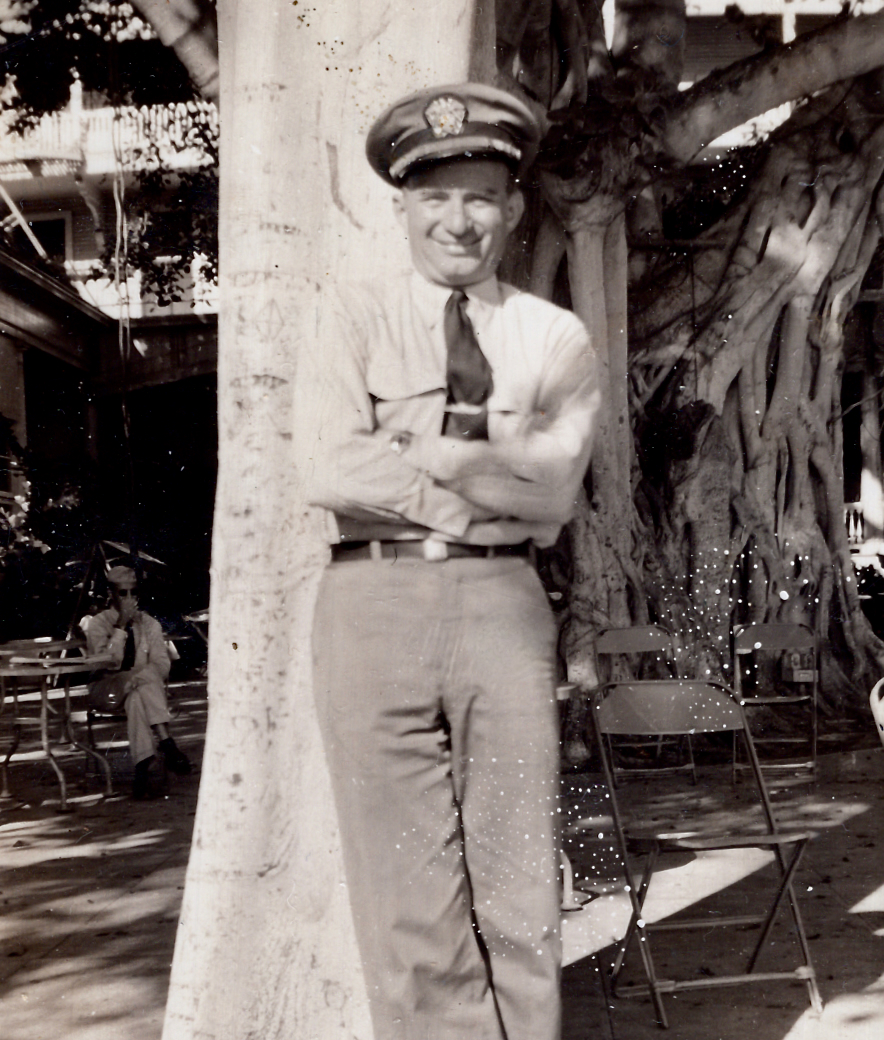 Lieutenant Watt. Courtesy of the author.
Lieutenant Watt. Courtesy of the author.
Soon after Lieutenant Watt returned to America late that winter, he would resume teaching at Lafayette, write a highly popular text book (An American Rhetoric) and pen numerous poems for The New Yorker, among other magazines. In one, he protested US testing of hydrogen bombs in the Pacific. “To split the ocean floor, and put an end to all things that live,” he wrote, “does not concern us much.” A collection of his poems, One Man’s Meter, was published in 1959.
In a 1984 guest column for the sports section of The New York Times, Watt shattered nearly 40 years of silence by players and observers about the Atomic Bowl: “My attention wandered from the field, out across the vast bowl of rubble to the ruins on the eastern horizon….My mind turned completely from the game. What were we doing here, happily celebrating an American holiday 6,000 miles from Pasadena on a grotesque golgotha so recently hallowed by horror? The question had no answer.”
A decade later, in an article for his college’s alumni magazine, he would re-visit his four months in Nagasaki, and conclude:
“I could take refuge in only two certainties: Number one, the atomic bombing of Nagasaki, and Hiroshima, was an immeasurable horror that would not only change the ways of warfare, but would also pervert the course of what we presume to call the history of civilization. And number two: Nothing like it must ever happen again.”
__________________________________
The Atomic Bowl: Football at Ground Zero—and Nuclear Peril Today, is now streaming via PBS.org and PBS apps this month and airing over many stations.
Greg Mitchell
Greg Mitchell is a documentary film director and the author of more than a dozen books. His latest award-winning film, “The Atomic Bowl: Football at Ground Zero—and Nuclear Peril Today,” is now streaming via PBS.org and PBS apps this month and airing over many stations. The companion e-book, with the same title, is also available.









